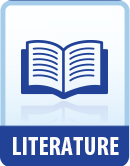|
This section contains 1,276 words (approx. 4 pages at 400 words per page) |

|
France is a librarian and teaches history and interdisciplinary studies at University Liggett School in Grosse Pointe Woods, Michigan. In the following essay, he considers how Hudgins's poem is a twentieth-century American variant on the elegiac tradition that emphasizes anxiety about death rather than consolation in its aftermath.
"Elegy for My Father, Who Is Not Dead" immediately suggests a twentieth-century tone that contrasts with earlier elegies. In previous centuries, elegies were usually meant to express lamentation, mourning, and praise for someone who had died. Like words spoken by a friend or relative of the deceased at a funeral, they often expressed sadness and feelings of loss but also provided consolation or comfort for the living. Two illustrative examples are Thomas Carew's "An Elegy Upon the Death of the Dean of St. Paul's, Dr. John Donne" (1633) and Walt Whitman's elegy for Abraham Lincoln, "When Lilacs Last in the...
|
This section contains 1,276 words (approx. 4 pages at 400 words per page) |

|




